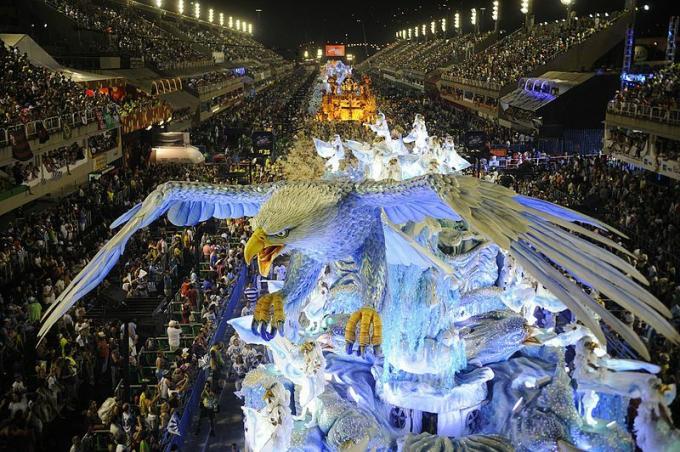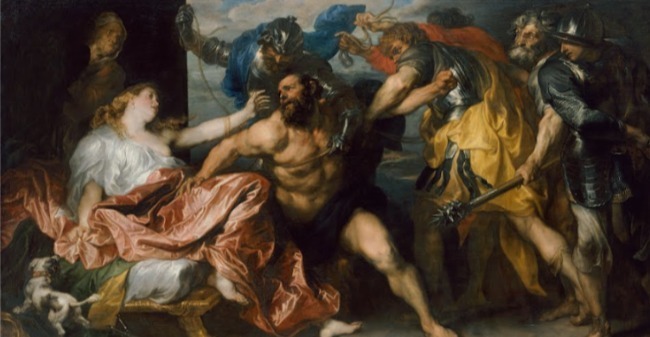Brazilian culture is represented by the set of traditions, cultural manifestations, customs, cuisine and religion of the people who have lived in the country throughout history.
Due to a large process of ethnic miscegenation, Brazil is one of the countries with greatest cultural diversity in the world.
In a simplified way, it can be said that the cultural formation of Brazil is the result of the miscegenation between the Indian, O black it's the European immigrant. But people of other nationalities also came to Brazil, bringing their traditions and customs with them, contributing to this enormous plurality.
Due to its diversity, Brazilian culture cannot be understood homogeneously, it is the result of different cultural elements, which are expressed in the different regions of the territory Brazilian.
Brazilian diversity, however, has always been accompanied by unequal and hierarchical relationships, with strong social injustices and centuries of violence, especially against blacks and indigenous people.
See about the meaning of culture.
Brazilian cultural manifestations
Cultural manifestations are the expression of a people, their rituals and celebrations. Discover some cultural events in Brazil.
Festival of Parintins
The Festival de Parintins takes place in the city of Parintins, in Amazonas, since 1965. There are three consecutive days of parades and competition between the two oxen that represent the festival: Boi Garantido and Boi Caprichoso.
A panel of judges is responsible for evaluating items such as plot, music and allegory and giving the final grade. The Parintins Festival is considered a Cultural Heritage of Brazil.
 Festival of Parintins.
Festival of Parintins.
June celebration
The Festas Juninas, also called São João, are traditional in the northeast region of Brazil and take place in June. This tradition was brought by the Portuguese and was influenced by African and indigenous peoples.
At these parties, square dance and ribbon stick presentations take place and the decoration is made with colorful flags and balloons. Some typical foods served in June festivals are pamonha, curau, hominy and popcorn.
 Dance presentation at Festa Junina.
Dance presentation at Festa Junina.
Parade of samba schools
The samba school parade takes place during carnival and is the most famous cultural event in Brazil. The most important parade takes place in the city of Rio de Janeiro, at the Sambódromo da Marquês de Sapucaí.
Several samba schools parade in richly decorated costumes and floats, and a judging committee evaluates the presentation. The public watches the parade from the stands and the presentation is broadcast live throughout Brazil.
 Samba school parade in Rio de Janeiro.
Samba school parade in Rio de Janeiro.
Frevo
Frevo is a typical dance from the northeast, especially from the cities of Recife and Olinda, in Pernambuco. It is considered an Intangible Heritage of Humanity by UNESCO.
This dance has its origins in the period of the abolition of slavery, it was created by freed slaves to celebrate carnival in the streets. Frevo dancers wear very colorful clothes and dance with a small umbrella in hand.
 Frevo presentation.
Frevo presentation.
Maculele
The maculelê is a dance or game made with sticks and accompanied by musical instruments such as the atabaque. It is believed that this cultural manifestation has African origins and that it suffered indigenous influence in Brazil.
According to some legends, the maculelê tells the story of a warrior who was attacked by a tribe and managed to defend himself using only two sticks, becoming a hero.
 Maculele.
Maculele.
Formation of Brazilian culture
Brazilian culture began to be formed with the arrival of the Portuguese in Brazil and the beginning of the colonization of the territory, which was occupied by Indians from different ethnic groups.
Then, the European colonizer brought millions of black Africans to work as slaves in Brazil. Slavery was used throughout the period of Portuguese colonization and also during the imperial period.
From the 19th century onwards, several European immigrants came to work in Brazilian lands, especially Italians and Germans. And at the beginning of the 20th century, Brazil also received a large number of Japanese.
Each of these ethnic groups had a strong influence on Brazilian culture, bringing their traditions, cultural manifestations, religions and cuisine.
These cultural elements were not only reproduced in Brazilian territory, but were also merged and transforming themselves into new cultural elements, which together are the basis of all Brazilian culture.
know more about cultural diversity and about the formation of the Brazilian people.
Indigenous Influences
Indigenous people lived in this territory for thousands of years and belonged to different ethnic groups. Among the most prominent during the colonization period are the Tupi and the guaraníes.
The Indians had their own language, religion, cuisine and traditions, but they were violently repressed by the colonizers. Through the Society of Jesus, for example, several Jesuit priests came to Brazil with the aim of catechizing native peoples.
Despite the harsh repression, many cultural elements of indigenous heritage are still present in Brazilian society today, such as the habit of sleeping in hammocks and the making of ceramic objects.
In cooking, some dishes of indigenous origin are maniçoba, a kind of stew made with meat and cassava leaf and served with rice and flour. And tacacá, a dish prepared with tucupi, cassava, jambu and shrimp.
 Tacacá.
Tacacá.
Many words in the Portuguese language are also of indigenous origin. Alligator, opossum, pirarucu, thrush, anteater, toucan, tree frog and boa constrictor are examples of some animal names.
Ibirapuera, Curitiba, Macapá, Sergipe, Sapucaí, Guarujá and Iguaçu are words that refer to places and were also incorporated into the Portuguese language.
Brazilian folklore also absorbed much of the indigenous legends. One of the most famous examples is the caipora, a boy who rides a pig through the forest and has the task of protecting waterfalls, rivers and forest animals.
Learn more about indigenous culture, O Brazilian folklore and the Brazilian folklore characters.
African influence
Africans were brought to Brazilian territory on slave trade ships and were enslaved by colonists for over 300 years. These Africans were of different ethnicities, spoke different languages and had their own cultures.
Like the indigenous people, enslaved blacks were prohibited from professing their faith and from carrying out their cultural manifestations. But despite the repression, much of its culture was absorbed by the Brazilian population.
In cooking, palm oil stands out, an oil widely used in African cuisine and which is an indispensable ingredient in Bahian cuisine today. One of the typical dishes of Bahia made with palm oil is acarajé.
 Baianas preparing the acarajé.
Baianas preparing the acarajé.
African-based religions were also developed with elements of African origin. Both Umbanda and Candomblé worship the orixás, who are African deities.
The Africans also exerted an important influence on Brazilian music, some instruments are the atabaque, the agogô, the afoxé and the berimbau.
The berimbau is the main instrument of capoeira, a fight developed by enslaved blacks as a defense mechanism and which is practiced today in several countries around the world.
 Capoeira Wheel.
Capoeira Wheel.
Learn more about Afro-Brazilian culture and the African matrix religions Umbanda and Candomblé.
Influence of immigrants
The first immigrants were the Portuguese, who colonized the Brazilian territory for 322 years. Its main influence was, without a doubt, the Portuguese language - official language and spoken throughout the Brazilian territory.
The other prominent Portuguese influence was Catholicism. Catholicism has been at the base of Brazilian society throughout its history and continues to be the religion with the most adherents in the country.
From the 19th century onwards, other European immigrants began to arrive in Brazil, many of them to work in the coffee plantations. Italians and Germans were the most expressive groups, but large groups of Swiss, Spaniards, Poles and Ukrainians also came.
The influence of European peoples is observed in cuisine, architecture, cultural manifestations and even in the language - in some cities in Rio Grande de Sul and Santa Catarina it is possible to find inhabitants who still speak German, for example.
 Blumenau, city of German immigration.
Blumenau, city of German immigration.
From the 20th century onwards, there was also a large immigration of Japanese, who were especially concentrated in São Paulo and Paraná. The Japanese influence in our culture is expressed in cooking, in sports such as judo, karate and baseball and also in typical parties such as the matsuri.
Understand the difference between immigration and emigration. know what it is cultural identity.



